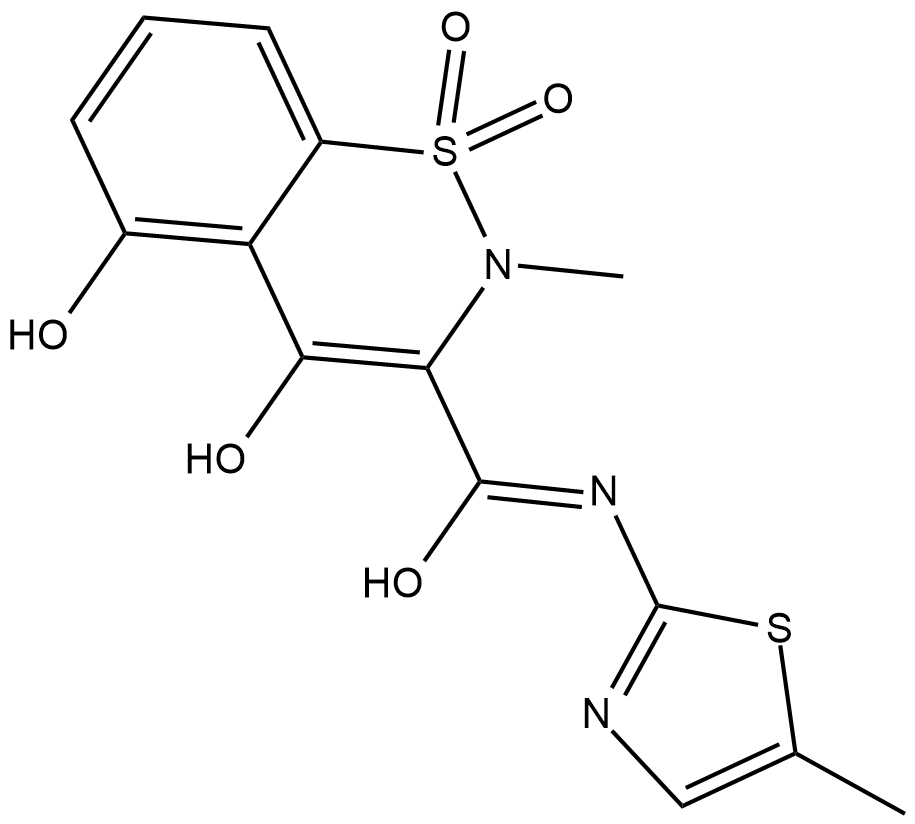P450
Products for P450
- Cat.No. Product Name Information
-
GC66197
α-?Terpinyl acetate
α-Terpinyl acetate is a monoterpene ester isolated from Laurus nobilis L. essential oil. α-Terpinyl acetate is a competitive P450 2B6 substrate which binding to the active site of P450 2B6 with a Kd value of 5.4 μM.
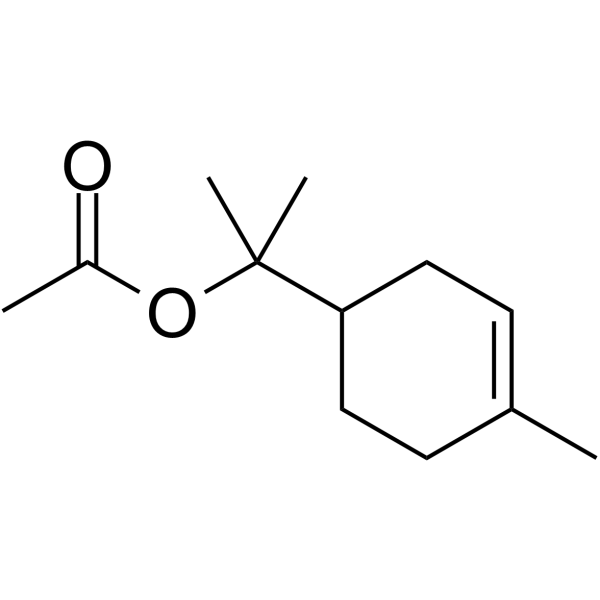
-
GC45208
α-hydroxy Metoprolol
α-hydroxy Metoprolol is an active metabolite of the β1-adrenergic receptor blocker metoprolol.

-
GC63272
β-Apo-8’-carotenal
β-Apo-8'-carotenal (Apocarotenal), a provitamin A carotenoid, is an inducer of CYPlA1 and CYPlA2 in rat. β-Apo-8'-carotenal is present in many fruits and vegetables.
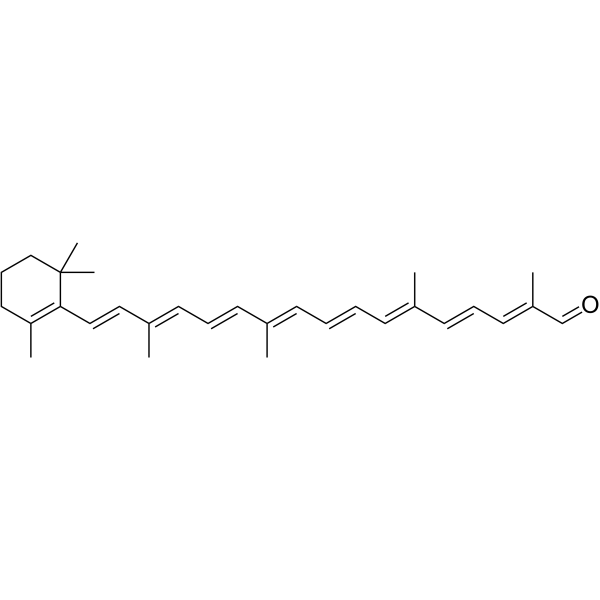
-
GC45239
δ4-Abiraterone
δ4-Abiraterone is a major metabolite of abiraterone. δ4-Abiraterone is an inhibitor of CYP17A1, 3b-hydroxysteroid dehydrogenase (3βHSD) and steroid-5a-reductase (SRD5A) and also an antagonist of androgen receptor.

-
GC40112
(±)-Climbazole-d4
(±)-Climbazole-d4 is intended for use as an internal standard for the quantification of climbazole by GC- or LC-MS.

-
GC46284
(±)-Cotinine-d3
An internal standard for the quantification of cotinine

-
GC40954
(±)-N-3-Benzylnirvanol
(±)-N-3-Benzylnirvanol is a racemic mixture of (+)-N-3-benzylnirvanol and (-)-N-3-benzylnirvanol.

-
GC45269
(±)10(11)-DiHDPA
(±)10(11)-DiHDPA is produced from cytochrome P450 epoxygenase action on docosahexaenoic acid.

-
GC45270
(±)10(11)-EDP Ethanolamide
(±)10(11)-EDP ethanolamide is an ω-3 endocannabinoid epoxide and cannabinoid (CB) receptor agonist (EC50s = 0.43 and 22.5 nM for CB1 and CB2 receptors, respectively).

-
GC41212
(±)10(11)-EpDPA
Cytochrome P450 metabolism of polyunsaturated fatty acids produces numerous bioactive epoxide regioisomers.

-
GC49439
(±)11(12)-DiHET MaxSpec® Standard
A quantitative analytical standard guaranteed to meet MaxSpec® identity, purity, stability, and concentration specifications

-
GC40466
(±)11(12)-EET
(±)11(12)-EET is a fully racemic version of the R/S enantiomeric forms biosynthesized from arachidonic acid by cytochrome P450 enzymes.

-
GC40386
(±)11(12)-EpETE
Eicosapentaenoic acid is converted to epoxyeicosatetraenoic acids (EpETE) by several cytochrome P450 isoforms.

-
GC41143
(±)11,12-DiHETE
(±)11,12-DiHETE is a dihydroxy metabolite of EPA produced by cytochrome P450-mediated epoxide formation and subsequent hydrolysis by epoxide hydrolase.

-
GC40802
(±)12(13)-DiHOME
(±)12(13)-DiHOME is the diol form of (±)12(13)-EpOME, a cytochrome P450-derived epoxide of linoleic acid also known as isoleukotoxin.

-
GC41648
(±)13(14)-DiHDPA
(±)13(14)-DiHDPA is a metabolite of docosahexaenoic acid that is produced via oxidation by cytochrome P450 epoxygenases.

-
GC41191
(±)13(14)-EpDPA
Cytochrome P450 metabolism of polyunsaturated fatty acids produces numerous bioactive epoxide regioisomers.

-
GC40430
(±)14(15)-EET
(±)14(15)-EET is biosynthesized in rat and rabbit liver microsomes by CYP450.

-
GC41651
(±)14(15)-EET-SI
Arachidonic acid is metabolized in the vascular endothelium to epoxytrienoic acids (EETs or EpETrEs) by cytochrome P450 enzymes.

-
GC41652
(±)14(15)-EpEDE
8,11,14-Eicosatrienoic acid, also known as dihomo-γ-linolenic acid, is a polyunsaturated fatty acid (PUFA) produced from γ-linolenic acid by the action of fatty acid elongases.

-
GC40360
(±)14(15)-EpETE
EDHF (endothelium-derived hyperpolarizing factor) is an unidentified mediator released from vascular endothelial cells in response to acetylcholine and bradykinin which is distinct from the NOS- (nitric oxide) and COX-derived (prostacyclin) vasodilators.

-
GC41653
(±)16(17)-DiHDPA
(±)16(17)-DiHDPA is produced from cytochrome P450 epoxygenase action on docosahexaenoic acid.

-
GC41194
(±)16(17)-EpDPA
EDHF (endothelium-derived hyperpolarizing factor) is an unidentified mediator released from vascular endothelial cells in response to acetylcholine and bradykinin which is distinct from the NOS- (nitric oxide) and COX-derived (prostacyclin) vasodilators.

-
GC40434
(±)16-HETE
Electrolyte and fluid transport in the kidney are regulated in part by arachidonic acid and its metabolites.

-
GC41117
(±)17(18)-DiHETE
Eicosapentaenoic acid is an ω-3 fatty acid abundantly available in marine organisms.

-
GC41288
(±)17(18)-EpETE-Ethanolamide
(±)17(18)-EpETE-Ethanolamide is an ω-3 endocannabinoid epoxide.

-
GC40435
(±)17-HETE
Electrolyte and fluid transport in the kidney are regulated in part by arachidonic acid and its metabolites.
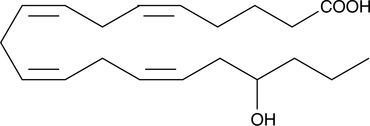
-
GC40436
(±)18-HETE
(±)18-HETE is the racemic version of a cytochrome P450 (CYP450) metabolite of arachidonic acid.

-
GC40388
(±)19(20)-DiHDTE
(±)19(20)-DiHDTE is an oxylipin and an oxidative metabolite of docosapentaenoic acid.

-
GC41655
(±)19(20)-EDP Ethanolamide
(±)19(20)-EDP ethanolamide is an ω-3 endocannabinoid epoxide and cannabinoid (CB) receptor agonist (EC50s = 108 and 280 nM for CB1 and CB2, respectively).

-
GC41199
(±)19(20)-EpDPA
EDHF (endothelium-derived hyperpolarizing factor) is an unidentified mediator released from vascular endothelial cells in response to acetylcholine and bradykinin which is distinct from the NOS- (nitric oxide) and COX-derived (prostacyclin) vasodilators.

-
GC40905
(±)19(20)-EpDTE
(±)19(20)-EpDTE is an oxylipin and an oxidative metabolite of docosapentaenoic acid.

-
GC41656
(±)2-(14,15-Epoxyeicosatrienoyl) Glycerol
2-Arachidonoyl glycerol (2-AG) is an endogenous central cannabinoid (CB1) receptor agonist that is present at relatively high levels in the central nervous system.

-
GC41201
(±)4(5)-DiHDPA lactone
(±)5(6)-DiHET lactone is a 1,5 cyclic ester derived from (±)5(6)-DiHET, which, in turn, is a potential derivative of epoxidation of arachidonic acid at the α-5 double bond.

-
GC41660
(±)4(5)-EpDPA methyl ester
(±)4(5)-EpDPA methyl ester is a derivative of (±)4(5)-EpDPA which is stable enough to ship and handle routinely.

-
GC40270
(±)5(6)-DiHET
5(6)-DiHET is a fully racemic version of the enantiomeric forms biosynthesized from 5(6)-EET by epoxide hydrolases.

-
GC40437
(±)5(6)-DiHET lactone
5,6-DiHET lactone is a lactonized form of 5,6-EET and 5,6-DiHET.

-
GC41119
(±)5(6)-DiHETE
Eicosapentaenoic acid is an ω-3 polyunsaturated fatty acid that is abundant in marine organisms and fish oils.

-
GC40363
(±)5(6)-DiHETE lactone
Eicosapentaenoic acid is metabolized, in part, through cytochrome P450-catalyzed epoxidation followed by conversion to the vicinal diols by epoxide hydrolases.

-
GC40438
(±)5(6)-EET
5(6)-EET is a fully racemic version of the enantiomeric forms biosynthesized from arachidonic acid by cytochrome P450 enzymes.

-
GC41319
(±)5(6)-EpETE methyl ester
(±)5(6)-EpETE methyl ester is a derivative of 5(6)-EpETE which is stable enough to ship and handle routinely.

-
GC41663
(±)7(8)-DiHDPA
(±)7(8)-DiHDPA is a major metabolite of docosahexaenoic acid that is produced via oxidation by cytochrome P450 epoxygenases.

-
GC41203
(±)7(8)-EpDPA
Docosahexaenoic acid is the most abundant ω-3 fatty acid in neural tissues, especially in the brain and retina.

-
GC40906
(±)7(8)-EpDTE
(±)7(8)-EpDTE is an oxylipin and an oxidative metabolite of docosapentaenoic acid.

-
GC40272
(±)8(9)-DiHET
Epoxide hydrolases convert the EETs into vicinal diols, with the concurrent loss of much of their biological activity.

-
GC40365
(±)8(9)-EpETE
Eicosapentaenoic acid is converted to epoxyeicosatetraenoic acids (EpETEs) by several cytochrome P450 isoforms.

-
GC41120
(±)8,9-DiHETE
(±)8,9-DiHETE is a major metabolite of the 20:5 ω-3 fatty acid eicosapentaenoic acid.

-
GC40801
(±)9(10)-DiHOME
Leukotoxin is the 9(10) epoxide of linoleic acid, generated by neutrophils during the oxidative burst.

-
GC40443
(±)9-HETE
(±)9-HETE is one of the six monohydroxy fatty acids produced by the non-enzymatic oxidation of arachidonic acid.

-
GC12404
(+)-Ketoconazole
Potent inhibitor of cytochrome P450c17
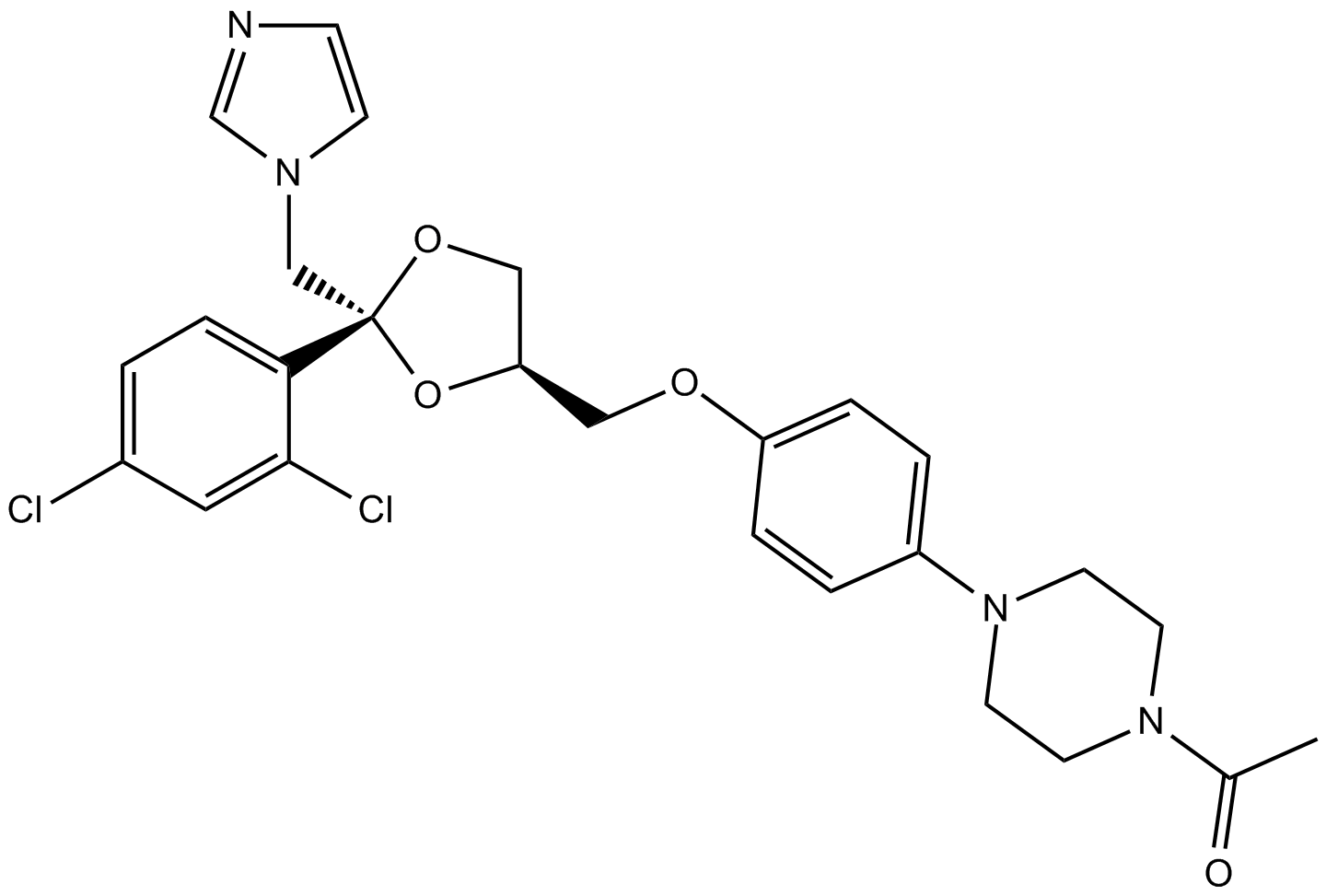
-
GC30424
(-)-Cephaeline dihydrochloride (NSC 32944)
(-)-Cephaeline dihydrochloride (NSC 32944) is a selective CYP2D6 inhibtor with an IC50 of 121 μM.
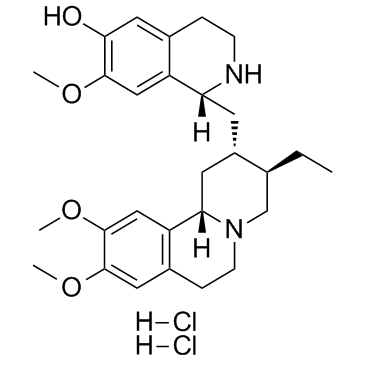
-
GC18622
(2'S)-Nicotine-1-oxide
(2'S)-Nicotine-1-oxide is a metabolite of nicotine .
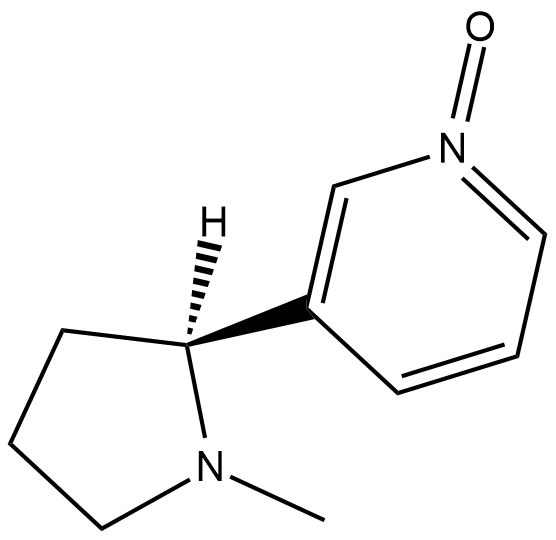
-
GC41694
(3S)-hydroxy Quinidine
(3S)-hydroxy Quinidine is an active quinidine metabolite.

-
GC39746
(3S,5S)-Atorvastatin
(3S,5S)-Atorvastatin is a inactive enantiomer of Atorvastatin.
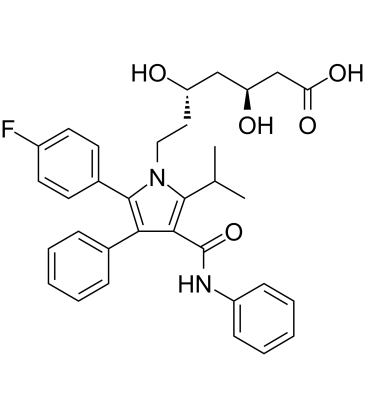
-
GC49189
(E/Z)-4-hydroxy Tamoxifen-d5
An internal standard for the quantification of (E/Z)-4-hydroxy tamoxifen

-
GC18286
(R)-Mephenytoin
(R)-Mephenytoin is the (R) enantiomer of the anticonvulsant mephenytoin.
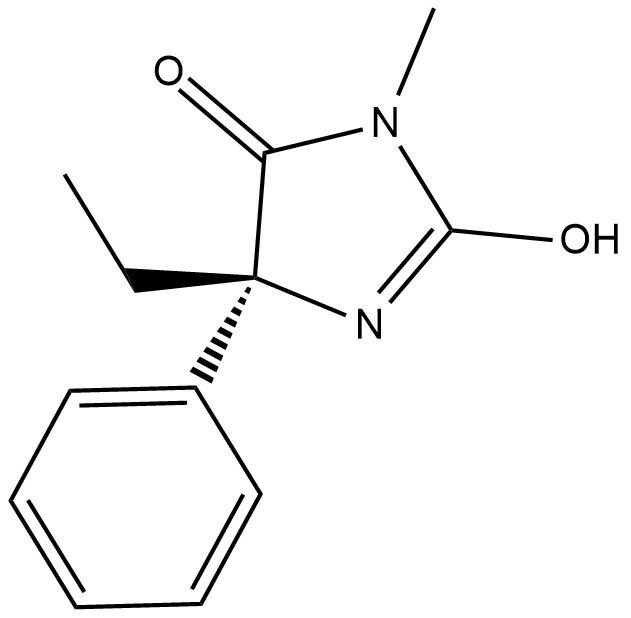
-
GC41720
(R)-Omeprazole (sodium salt)
(R)-Omeprazole is the inactive isomer of omeprazole, a gastric proton-pump inhibitor.

-
GC14486
(S)-Mephenytoin
S-Mephenytoin is an anticonvulsive drug which is metabolized by N-demethylation and 4-hydroxylation .
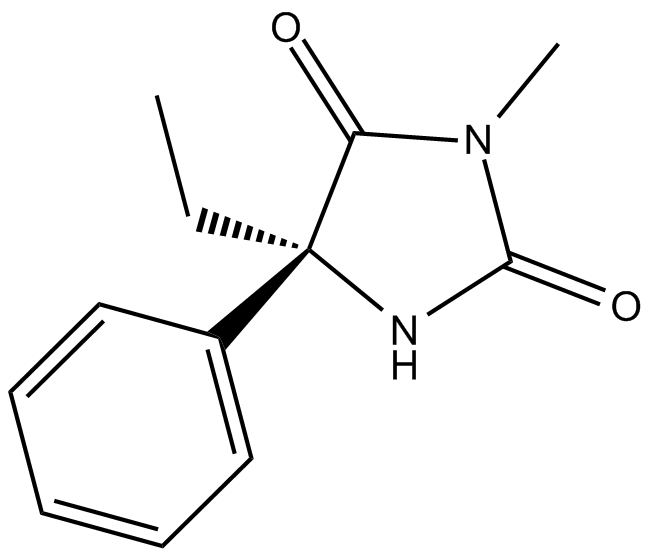
-
GC41837
1,3,7-Trimethyluric Acid
1,3,7-Trimethyluric acid is a methyl derivative of uric acid and a product of C-8 oxidation of caffeine by cytochrome P450 enzymes.

-
GC46387
1,3,7-Trimethyluric Acid-d9
An internal standard for the quantification of 1,3,7-trimethyluric acid

-
GC33073
1-Ethynylnaphthalene
1-Ethynylnaphthalene is a selective inhibitor of cytochrome P450 1B1.
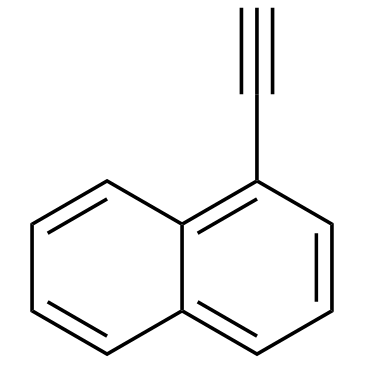
-
GC60446
1-Ethynylpyrene
1-Ethynylpyrene is an aryl acetylenic inhibitor of cytochromes P450 1A1, 1A2, and 2B1 with IC50s of 0.18, 0.32, and 0.04 μM, respectively.
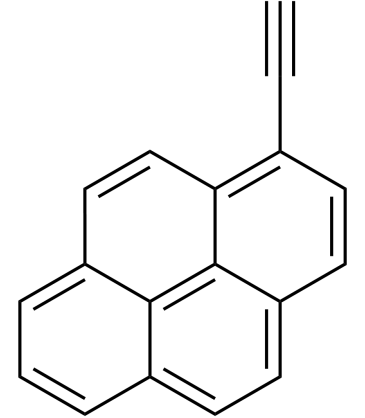
-
GC49118
10-hydroxy Warfarin
A metabolite of (R)-warfarin

-
GC40447
12(R)-HETE
Biosynthesis of 12(R)-HETE in invertebrates is via lipoxygenation of arachidonic acid.

-
GC18783
13,14-dihydro-15-keto Prostaglandin E1
13,14-dihydro-15-keto Prostaglandin E1 (PGE1) is a metabolite of PGE1 with much reduced biological activity.
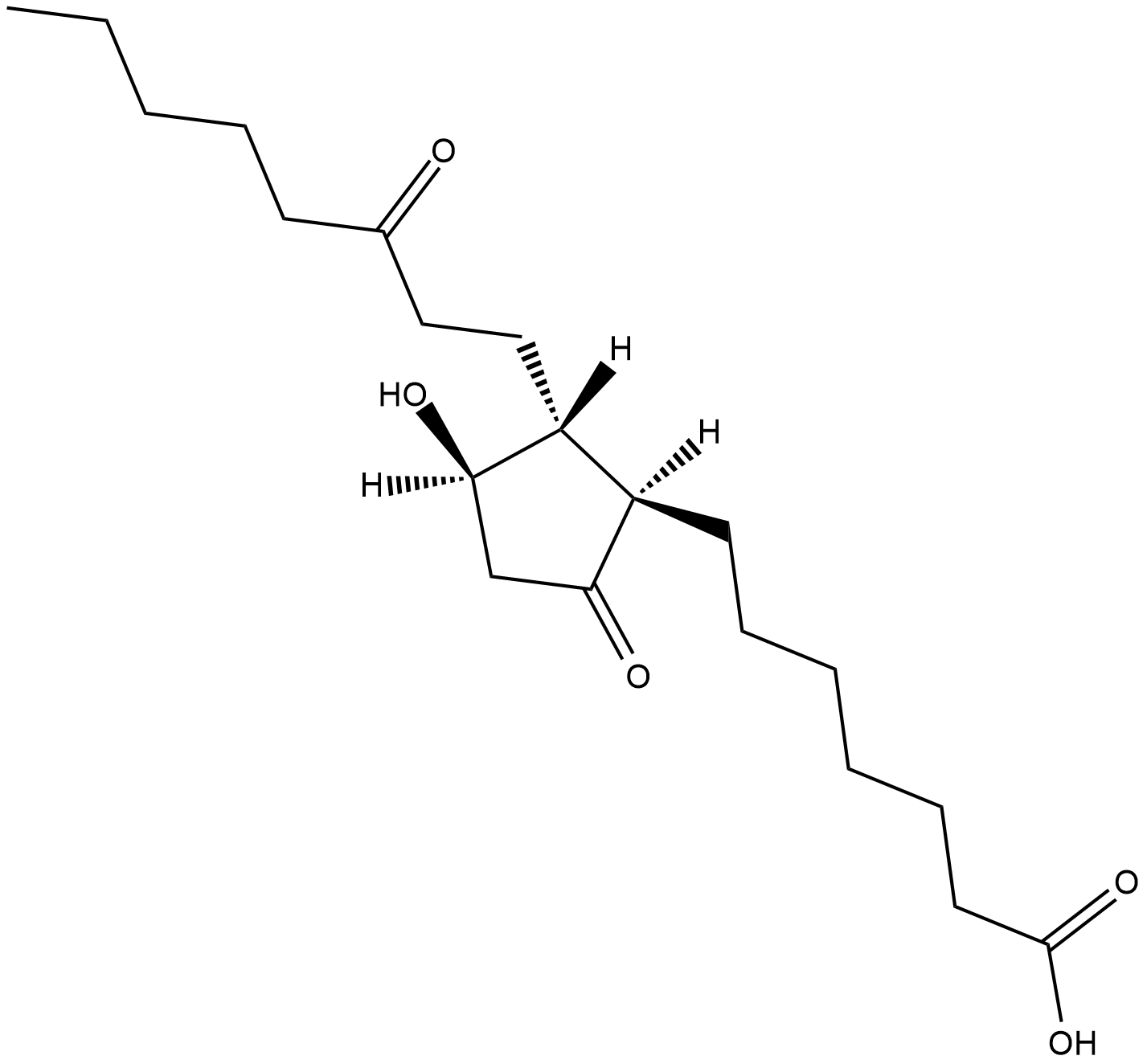
-
GC40424
14,15-EE-5(Z)-E
Epoxyeicosatrienoic acids (EETs), such as 11(12)-EET and 14(15)-EET, are cytochrome P450 metabolites of arachidonic acid that have been identified as endothelium-derived hyperpolarizing factors with vasodilator activity.

-
GC40425
14,15-EE-8(Z)-E
Epoxyeicosatrienoic acids (EETs), such as 11(12)-EET and 14(15)-EET, are cytochrome P450 metabolites of arachidonic acid that have been identified as endothelium-derived hyperpolarizing factors with vasodilator activity.

-
GC46438
14S(15R)-EET
A cytochrome P450 metabolite of arachidonic acid

-
GC40454
16(S)-HETE
Electrolyte and fluid transport in the kidney are regulated in part by arachidonic acid and its metabolites.

-
GC41945
16-hydroxy Hexadecanoic Acid
16-hydroxy Hexadecanoic acid is a metabolite of the saturated fatty acid palmitic acid (16:0) that has been hydroxylated on its terminal (ω) carbon.

-
GC41300
17β-hydroxy Exemestane
17β-hydroxy Exemestane is the primary active metabolite of exemestane.

-
GC40455
17(R)-HETE
Electrolyte and fluid transport in the kidney are regulated in part by arachidonic acid and its metabolites.

-
GC40456
17(S)-HETE
Electrolyte and fluid transport in the kidney are regulated in part by arachidonic acid and its metabolites.

-
GC46464
17R(18S)-EpETE
An EPA metabolite and activator of BKCa channels

-
GC40457
19(R)-HETE
19-HETE is one of the major cytochrome P450 (CYP450) metabolites of arachidonic acid that is released from the kidney in response to angiotensin II.

-
GC40458
19(S)-HETE
19-HETE is one of the major cytochrome P450 (CYP450) metabolites of arachidonic acid that is released from the kidney in response to angiotensin II.

-
GC46475
19R(20S)-EpDPA
A DHA metabolite

-
GC13836
2,3-dihydrothieno-Thiadiazole Carboxylate
CYP450 enzymes (CYP2E1 and CYP2B4) inhibitor
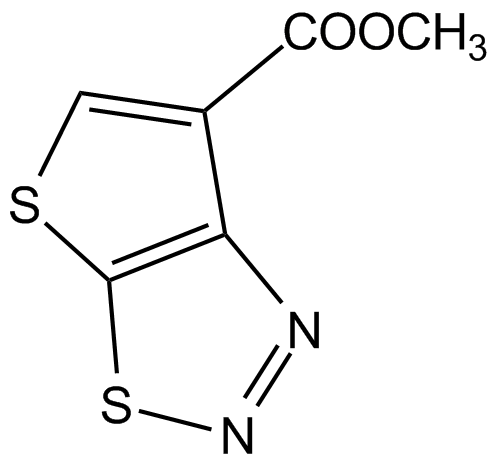
-
GC61722
2,6-Dimethylquinoline
2,6-Dimethylquinoline, a nature constituent from the roots of Peucedantu praeruptorum, is a CYP1A2 inhibitor with an IC50 of 3.3 ?M.
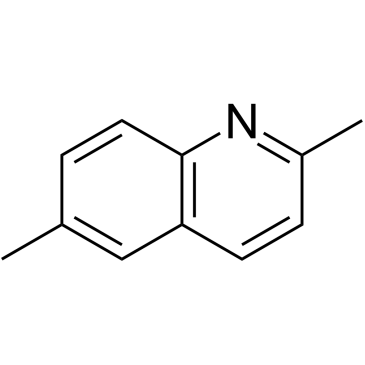
-
GC49159
2-(1-Piperazinyl)pyrimidine
An α2-AR antagonist and active metabolite of azapirones

-
GC49362
2-Amino-3,8-dimethylimidazo-[4,5-f]-quinoxaline
A food-derived carcinogen
![2-Amino-3,8-dimethylimidazo-[4,5-f]-quinoxaline Chemical Structure 2-Amino-3,8-dimethylimidazo-[4,5-f]-quinoxaline Chemical Structure](/media/struct/GC4/GC49362.png)
-
GC12262
2-Phenyl-2-(1-piperidinyl)propane
mechanism-based inactivator of human cytochrome P450 (CYP) 2B6
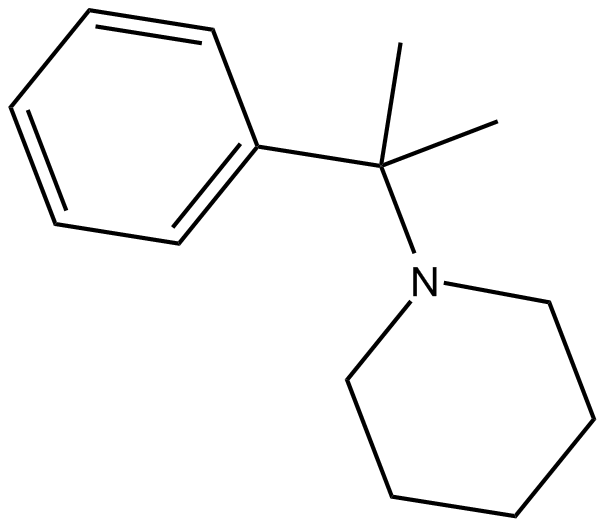
-
GC41104
20-carboxy Arachidonic Acid
20-carboxy Arachidonic acid (20-COOH-AA) is the major metabolite of 20-HETE that is produced in renal tubular epithelial, endothelial, and microvascular smooth muscle cell cultures.

-
GC40377
20-HEPE
20-HEPE is a metabolite of eicosapentaenoic acid that is formed via ω-oxidation of EPA by cytochrome P450 (CYP) ω-oxidases, including human CYP4F3B.

-
GC42083
20-HETE Ethanolamide
Arachidonoyl ethanolamide (AEA) is an endogenous lipid neurotransmitter with cannabinergic activity, binding both the central cannabinoid (CB1) and peripheral cannabinoid (CB2) receptors.
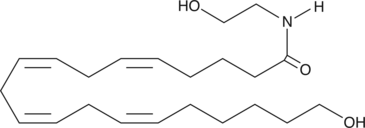
-
GC41474
20-hydroxy Prostaglandin E2
20-hydroxy Prostaglandin E2 (20-hydroxy PGE2) is a product of cytochrome P450 metabolism of PGE2.
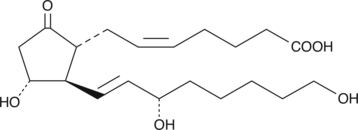
-
GC40534
20-hydroxy Prostaglandin F2α
20-hydroxy Prostaglandin F2α (20-hydroxy PGF2α) is the ω-oxidation product of PGF2α.
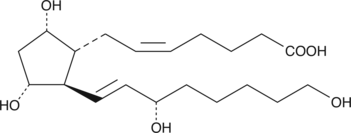
-
GC52083
21-Deoxycortisone
A corticosteroid metabolite of 11-keto progesterone

-
GC40968
21-hydroxy Eplerenone
21-hydroxy Eplerenone is a major metabolite of the mineralocorticoid receptor antagonist eplerenone.

-
GC41480
3'-hydroxy Lidocaine
3'-hydroxy Lidocaine is an active metabolite of lidocaine formed by the cytochrome P450 (CYP) isoforms CYP1A2 and CYP3A4.

-
GC49169
3,8’-Biapigenin
A biflavonoid with diverse biological activities

-
GC18817
3β-hydroxy-5-Cholestenoic Acid
3β-hydroxy-5-Cholestenoic acid is an active metabolite of cholesterol formed when cholesterol is metabolized by the cytochrome P450 (CYP) isomer CYP27A1.
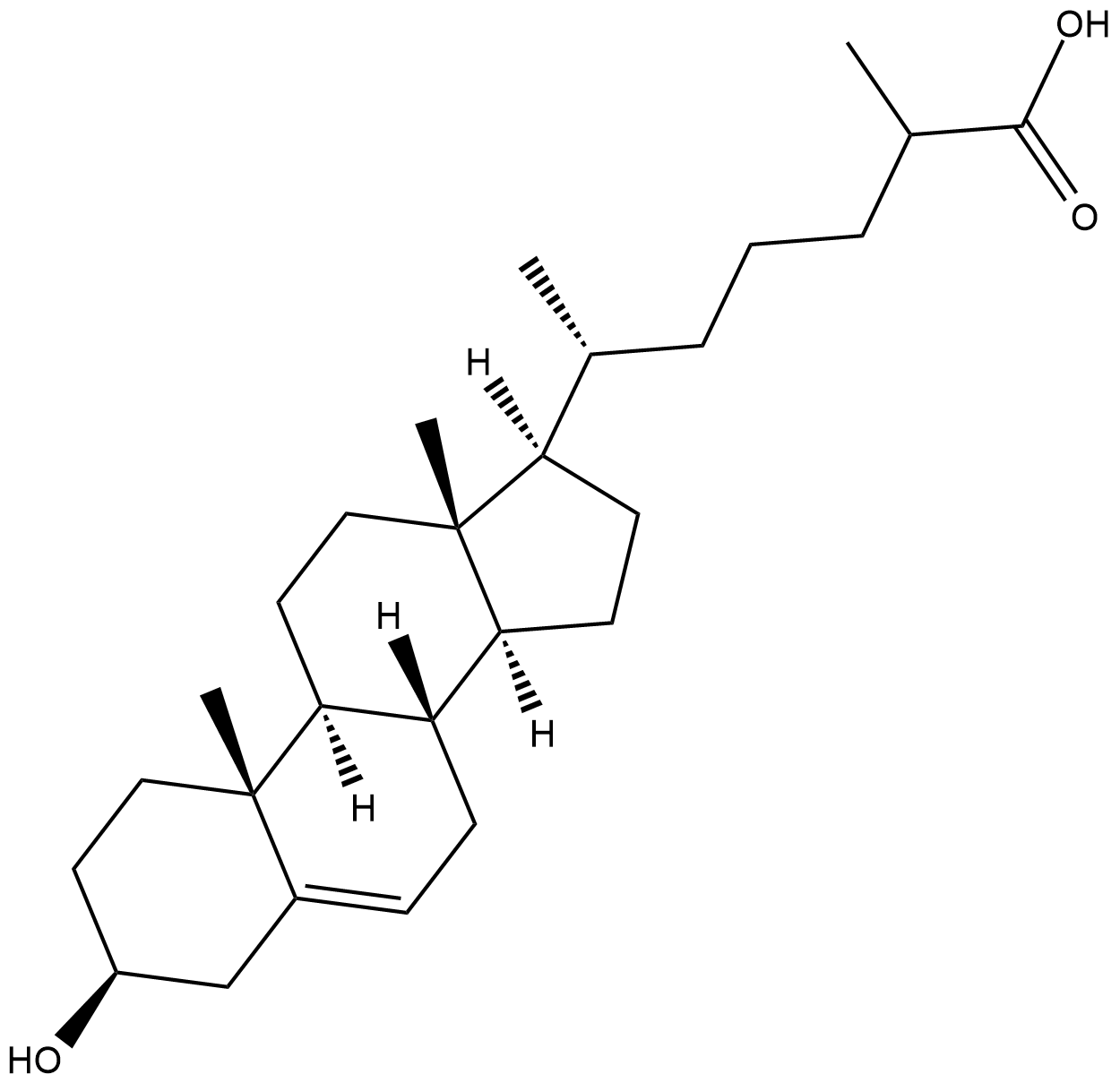
-
GC46678
4β-hydroxy Cholesterol-d7
An internal standard for the quantification of 4β-hydroxy cholesterol

-
GC18527
4'-hydroxy Flurbiprofen
A major active metabolite of flurbiprofen
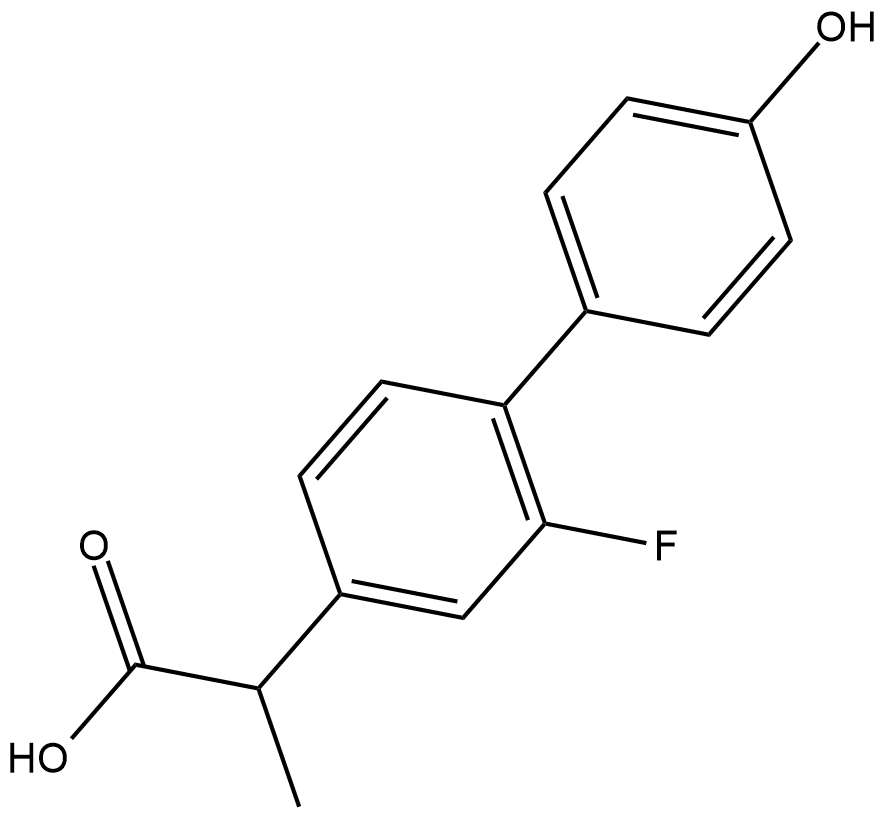
-
GC33071
4'-Methylchrysoeriol
4'-Methylchrysoeriol is a potent inhibitor of Cytochrome P450 enzymes, with an IC50 of 19 nM for human P450 1B1-dependent EROD.
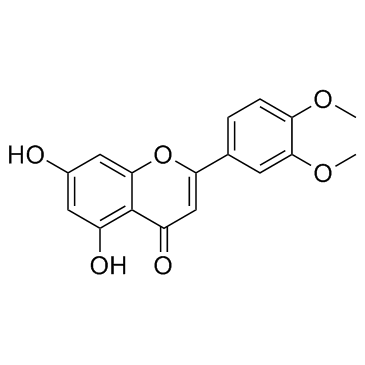
-
GC65517
4-(Trifluoromethyl)umbelliferone
4-(Trifluoromethyl)umbelliferone is fluorescent probe substrate for rat hepatic cytochrome P450 enzymes.
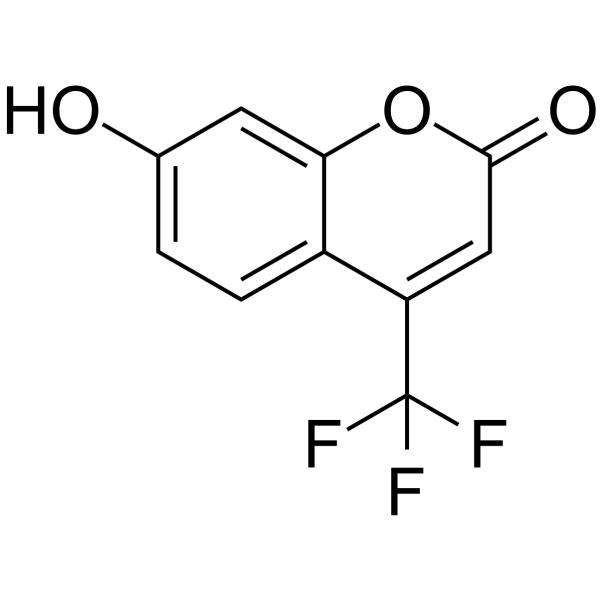
-
GC42405
4-hydroxy Atorvastatin (calcium salt)
4-hydroxy Atorvastatin is a metabolite of atorvastatin, an HMG-CoA reductase inhibitor present in formulations that have been used to treat hypercholesterolemia and certain dyslipidemias.

-
GC18425
4-hydroxy Atorvastatin lactone
4-hydroxy Atorvastatin lactone is a metabolite of atorvastatin , an HMG-CoA reductase inhibitor present in formulations that have been used to treat hypercholesterolemia and certain dyslipidemias.
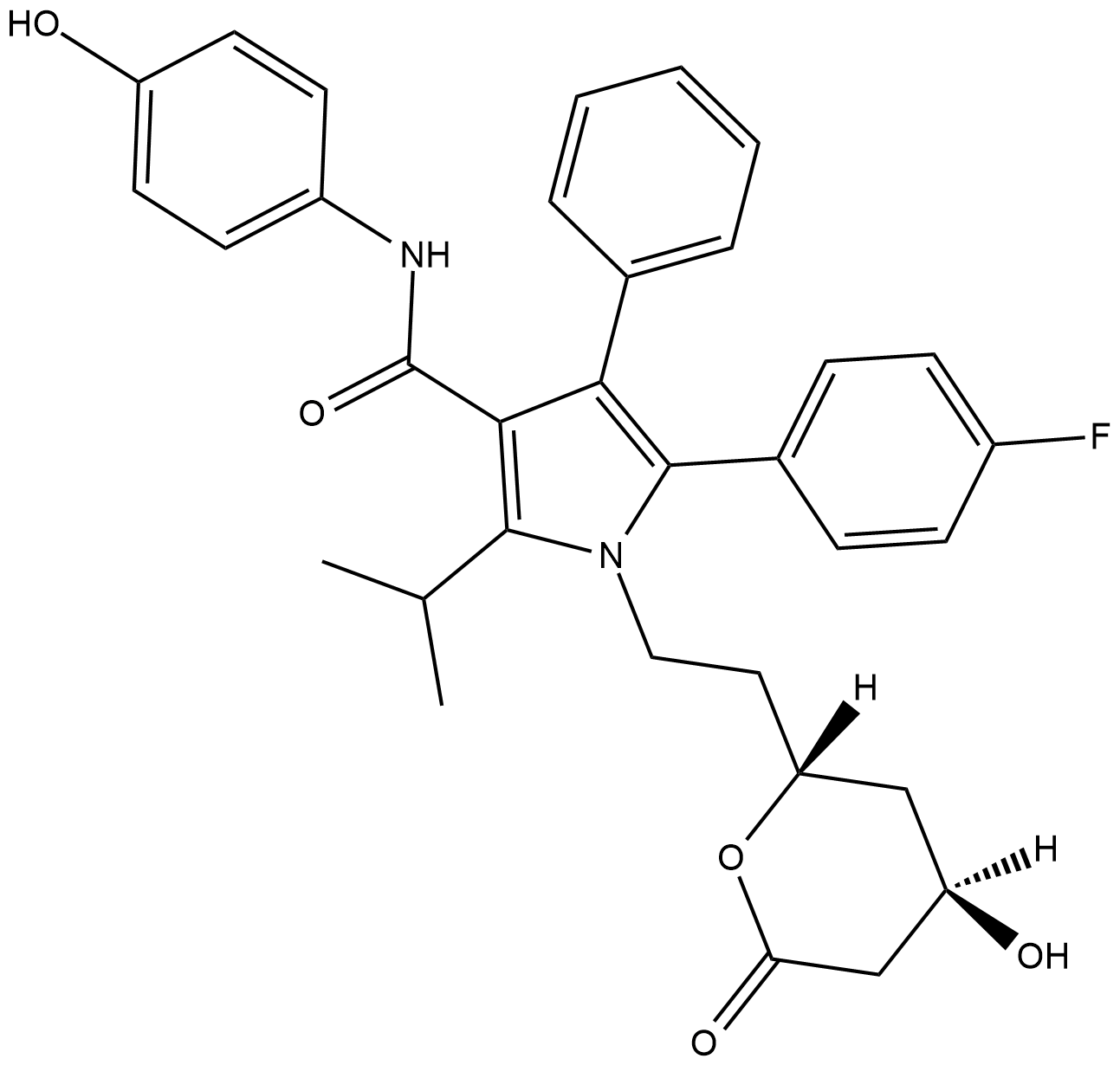
-
GC11758
4-phenyl-5-methyl-1,2,3-Thiadiazole
CYP2B4 and CYP2E1 inhibitor
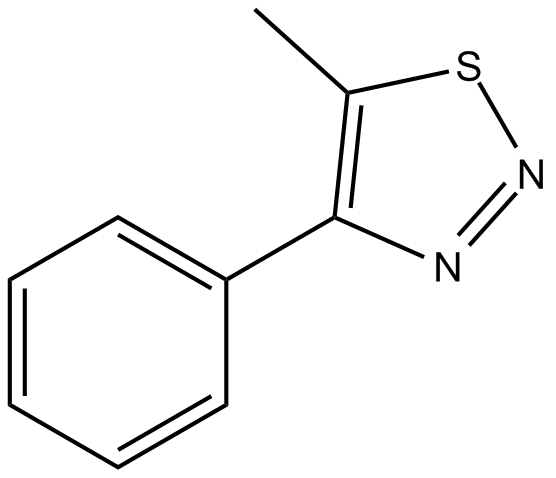
-
GC18582
5'-hydroxy Meloxicam
A metabolite of meloxicam
